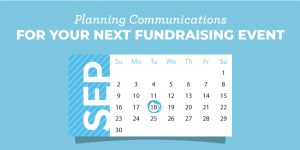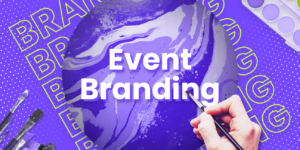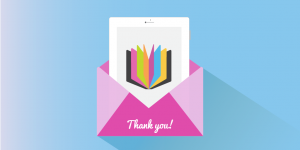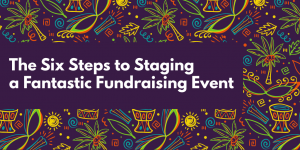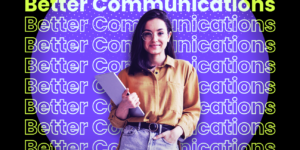We’ve talked a lot about tailoring your message to fit specific audiences in our past blog posts. By now, you’re probably a pro at creating personalized communications for different segments of your donor base. While your donors may have several unique traits, the gist of your message likely remains consistent. With event communications, you will be reaching out to attendees, major donors, underwriting corporations, volunteers, media representatives and more. Your message needs to resonate with all of them.
When you need to communicate with so many diverse groups of people, you really can’t rely on a one-size-fits-all strategy. Events require a robust integrated marketing campaign. You should reach out to different targeted segments of your audience with relevant messages that inspire action.
Creating Relevancy
When was the last time you did a deep dive into your donor data or performed a data audit? Your data is trying to tell you something, but you need to be able to hear it. You probably know that no two donors are alike, but what are the differences between them? Your data can tell you, and you can use this information to create more powerful and relevant communications.
Segment your database into separate target groups based on similar characteristics. This enables you to create a few different versions of a piece with the same purpose and a slightly different message that resonates better with each group. For example, send different promotional content for those who attend your event on a yearly basis. Messaging can focus on things like “their continued support” and “that time of year again.”
You can also provide different benefits and value to the separate segments of your audience. For example, an independent school can provide young alumni with a unique version of the reply card that offers a discounted rate to attend. Similarly, a reply card can be versioned for grandparents of current students, with an area to write in a specific recognition for their grandchild.
Other nonprofit organizations can version content and use this strategy as well. At the minimum, you can reach out with invitations and reply cards versioned for individuals or corporations. Consider sending a separate version to volunteers, so they know you appreciate their efforts.

Integrated Campaigns
Put as much thought into the ways you communicate with your audience as when developing your message and language. Before you start your outreach, develop a plan and schedule for your communications. Consider what messages lend themselves better for specific mediums. For example, you can get started with a Save the Date direct mail piece and then follow up with an email the same week. The email should mention the mailer and can include a strong call-to-action, like “buy your ticket today.”
As the day draws closer and you campaign moves forward, be sure to silence communications for those who have already completed a specific action. They don’t need a reminder that its the last chance to buy tickets if they’ve had theirs for months. However, you should move them into the next stage of your communications funnel. Once someone completes the first step, set them up for the next wave of communications.
If someone bought tickets for your event the very first time you asked, there is a good chance they want to engage even further. If you have an ad journal for your event and this person did not place an ad, you can follow up and ask if they would like to further their support by buying an ad in the publication.
Event Related Communications Can Include:
Save the Date Notice
Full Invitation
Press Releases and Kits
Social Media Reminders
Event Microsite
Ad Journals
Take advantage of your integrated campaign strategy and use social media or email to send reminders as the event draws closer. You can create a sense of urgency by highlighting upcoming deadlines and using words like “now” or “today.” Phrases like “early bird registration closing soon,” or “limited spots available” can convince the recipient to sign up immediately, so they don’t miss out. But be sure to plan for these touches well ahead. Its easy to post on social media as an afterthought. But you will see better results if you craft your message to feel in line with the rest your campaign.
Branding Your Event
All of your event-based communications should feel cohesive. A recipient should know that the email they just opened has to do with that Save the Date they received earlier in the week from the first glance. Graphics, fonts, and color scheme should remain consistent through all communications in your campaign.
It is important to work with your designer and make sure they have everything they need before anything is send out. The last thing you want is to “throw together” a thank you card that “looks kind of like” your invitation the day after the event. Think about these things early on and know what graphics, pictures, fonts, and logos you plan to use for each piece before launching the campaign.
Like the design elements, your language and tone should remain consistent for each segment throughout your campaign. Remember your language and messaging will vary based on who the targeted audience is to create relevancy but should be consistent for each track of communications. For example, if your initial Save the Date notice for young professionals used relaxed language to seem more fun and friendly, the full invitation probably shouldn’t read like a research paper!


